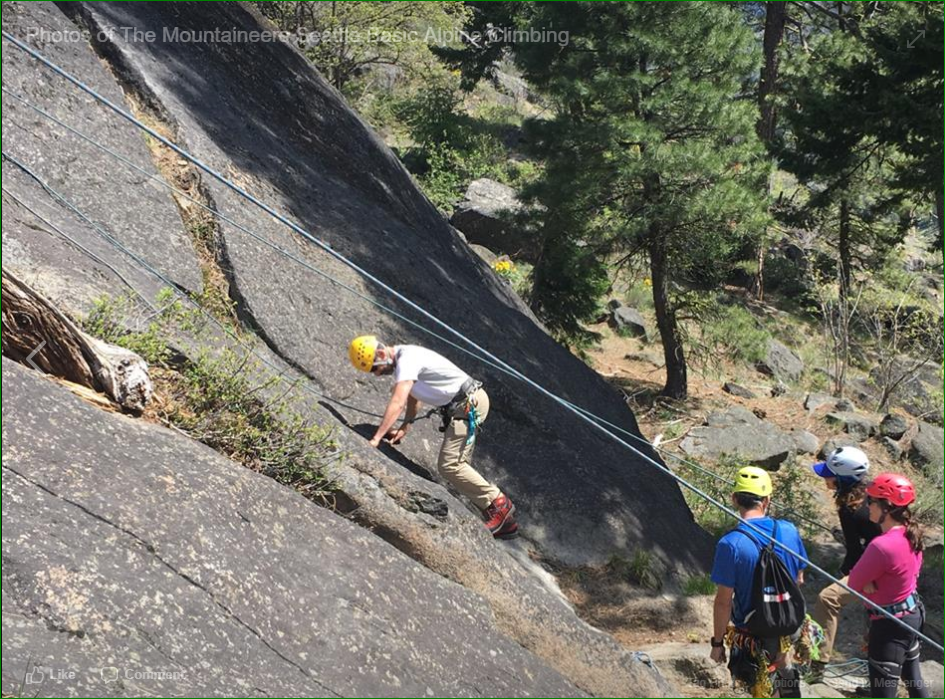
Friction climbing is a type of rock climbing where the rock face is angled to less than vertical, offering little in the way of traditional hand and foot holds. It requires movements that allow you to ascend steep slabs using nothing but rubber on rock and careful, deliberate movements. In this blog, I’ll tell you where to go to put your friction climbing skills to the test.
This blog is Part 3 of a friction climbing tutorial. If you haven’t yet, I encourage you to read Part 1: What is Friction Climbing? and Part 2: 5 Basic Skills of Friction Climbing.
Before we dive into where to go slab climbing, I'd like to offer one word of advice: on face or crack climbs I often find myself in a situation where l can see the next hold but no attractive foot or handholds to get there. In these cases, look for a small patch of rough rock or a little indentation where careful friction technique will solve the problem for one move or even half a move.
3 great areas for friction climbing:
Friction technique is not just for classic long slabs; it's in your bag of tricks to be hauled out when conditions call for a different approach. Friction slabs are like wide cracks. Love them or hate them, you can’t climb the most classic trad routes or scramble our iconic peaks without working through them. Access to friction slabs is vital to your climbing and scrambling experience, and for practice long slabs are where the fun lies and where the learning is best.
Mountaineers Friction Slabs, Seattle
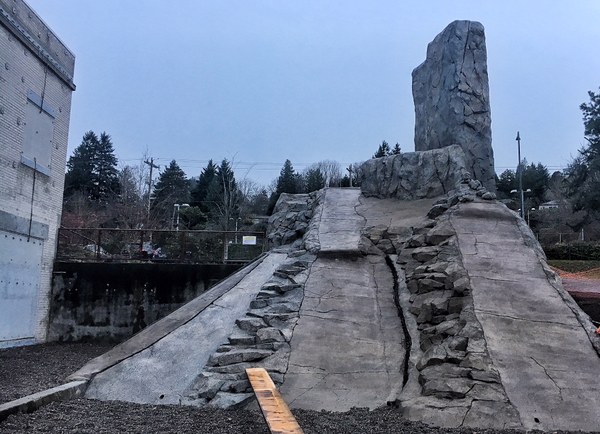
Beginning in late 2012, our volunteer climb leaders started dreaming about new, easier ways to teach friction climbing. From their imaginations came the idea to build our very own friction slab climbing center. Most climbers and scramblers learn friction climbing at the crag or on a mountain. We built this structure to not only enrich the student experience, but help the environment by offering an in-city, safe, cost-effective, and sustainable alternative to learning the basics of scrambling and climbing on fragile alpine peaks and at crowded crags.
After years of planning, fundraising, and construction, our Mountaineers Friction Slabs structure was completed in January 2018. We believe it is the only one of its kind in the world.
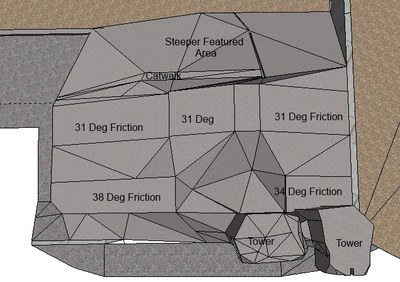
The structure has several facets ranging in difficulty from easy in hiking shoes to challenging for the advanced climber. It offers long routes with top rope anchors in place, short routes that can be used as bouldering exercises, and parallel walkways so instructors can work with students at eye level. The surface is concrete, and some of the slabs are smooth like tilted sidewalks; others are textured and stained to give the look and feel of fine Leavenworth granite. Our finishing contractor, Turnstone Construction, are true artists when it comes to cement. Lace up the shoes of your choice and give it a try!
PESHASTIN PINNACLES STATE PARK
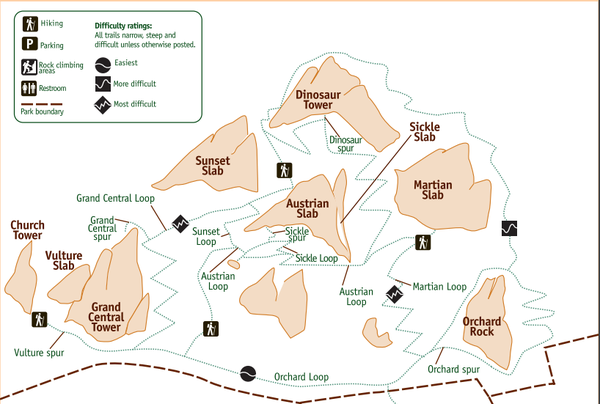
Our premier outdoor friction playground, the Pinnacles are an area of sandstone slabs and towers with wonderful grippy rock. They're just north of the highway between Leavenworth and Wenatchee; the entrance is well marked.The Mountaineers were instrumental in getting the area purchased and made a State Park some years ago. When the park is open, a state Discover Pass is required.Off season, the parking lot is gated but it’s still permitted to walk In and use the area. A map of the Pinnacles may be found here.
The area offers quite a range of difficulty. I suggest beginners start with Sunset Slabs, in the far upper left of the park. It offers good, long, low-angle, fifth class routes with solid anchors on top. But be aware there are no walk-around paths to them; the routes must be led to set top ropes.
ICICLE CREEK FRICTION SLABS
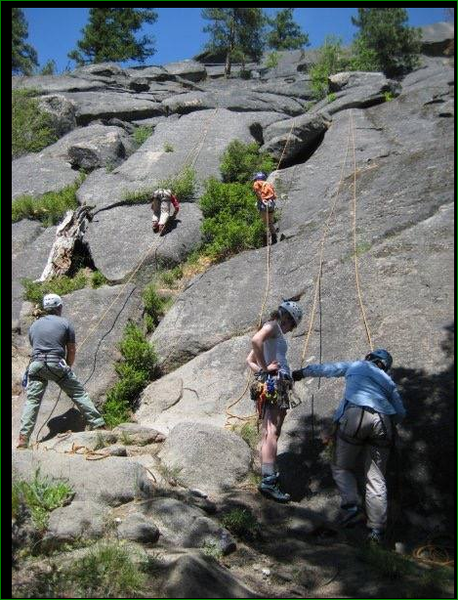
Here is a bonus if you made it this far - complete instructions to find a set of really lovely granite slabs that were specially and safely bolted for the purpose of teaching Mountaineers friction seminars. For some reason they have not been picked up by any guidebooks, which is a shame because they're a good resource. The areas were developed by Mountaineer Dave Anthony many years ago specifically as friction classrooms.
DIRECTIONS:
GPS coordinates using Datum NAD83 for the parking area for both sets of slabs:
N 47 32.690' = 47.54483
W 120 44.701' = 120.745
Park at large gravel pullout just downhill (upstream) from the gated road to Rat Creek bridge. The approach trail starts across the road and a few yards E.
LOWER AREA
About 25 minutes above the road, and immediately left of one of the main Givler's Dome approach trails. The slabs are a few hundred feet and slightly to the left of Givler’s Dome.
The lower area has two adjacent slabs split by a gully, which makes for a great instructor hangout. Up top are two sets of solid anchor bolts for top-ropes. The routes are each nearly a half rope length, nice and long but can be belayed from below. The anchors are reached by scrambling up a gully just left of the slabs. There is a wide ledge by the bolts, making it safe and easy to set topropes.
GPS coordinates lower slabs:
N 47 32.836' = 47.54727
W 120 44.512' = 120.7419
UPPER AREA
You reach the upper area via a few hundred feet of class 4 scrambling up and left from the ledge where you found the anchor bolts for lower slab (some may want a rope). Or do an end run by going into the large gully to the left, then ascending a few hundred feet to the upper slabs. That is a good descent route, but a nasty, dusty scramble up.
There are five good routes, starting with 5.3/5.4 on the far right, progressing to 5.8/5.9 on the left. The middle two routes are moderate up on the slab but have a difficult bouldering start which some may choose to aid. Some bolts above for top rope anchors, but take a few mid to large size cams and nuts to make anchors in convenient cracks.
The routes are superbly bolted for safe lead climbing. If you clip every bolt and have an attentive belayer, you cannot ground out. An excellent place to learn friction leading. (Parenthetically, I might add that is NOT the case at Peshastin Pinnacles. Some routes there have the bolts spaced dangerously far apart. Scope them out carefully before committing to a route.)
GPS coordinates upper slabs:
N 47 32.852' = 47.54753
W 120 44.508' = 120.7418
Learn More
Our friction climbing committee leads evening seminars on to teach the fundamentals of friction climbing. Find these seminars, as well as climbing courses offered by all of our branches, here.
 Cebe Wallace
Cebe Wallace